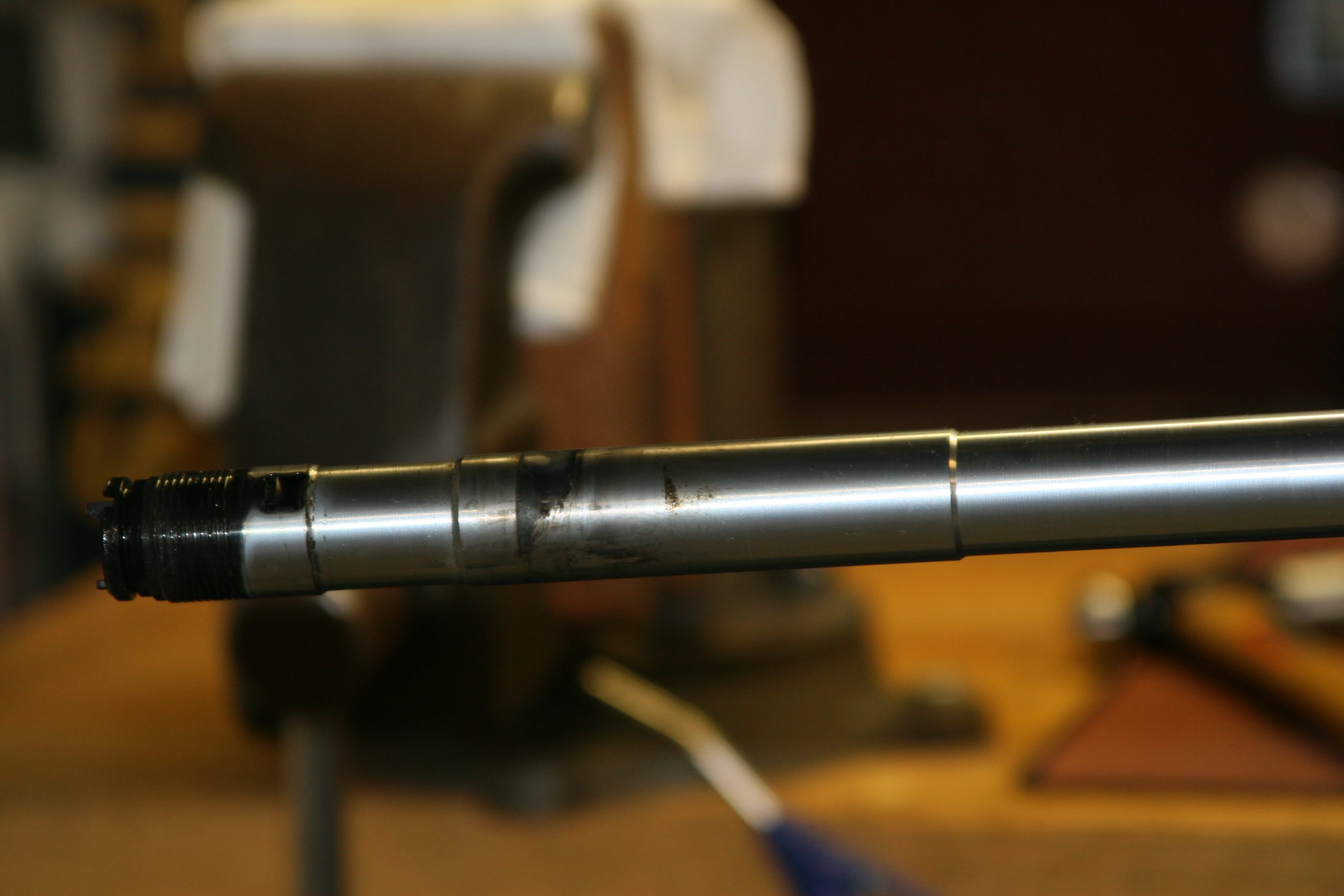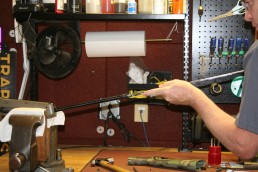Keeping Your Shotgun Running Smoothly
SHARE THIS POST
In much of the Midwest, shotguns are the first firearm to see daylight since being put away last winter. Unfortunately, many shotguns get “rode hard and put up wet.” If these same gun owners treated their trucks like they did their shotguns, they would be walking.
As a gunsmith for the past 30 plus years, I have seen my share of firearm failures; most have been with shotguns. And for the most part, semi-autos are the biggest culprits. Every summer, a tiny stream of firearms comes through the shop. But by September, the dam breaks as hunters take their shotguns out of semi-retirement.
Read the manual
Here’s a shortcut to reducing firearm issues: Read the manual! I cannot count the firearms I see each year that come into our shop that only need to be reassembled. The manual for each shotgun can be found online, as can YouTube videos of how to disassemble and reassemble your shotgun.
A simple trick I use to keep track of where each part goes is, as you disassemble the part, set it next to you in the order it comes out of the firearm, working away from the first part. If you run into a tricky assembly, a picture with your cell phone will help distinguish where each part goes.
Here’s a list of common issues and how to remedy them:
Sluggish action
Often, this is caused by improper cleaning or just plain and simple neglect. I recall a famous writer sending in one of his shotguns with this complaint. When I received the shotgun, I called him and let him know that I had dumped a half cup of nasty swamp water from the synthetic stock on his shotgun.
Many semi autos have a spring-loaded recoil spring tube where moisture, rust, weed seeds and carbon from fired shells accumulate, making the action operate sluggishly. To combat the moisture problem, some hardcore waterfowlers drill a small hole in their stock just above the sling swivel stud to allow water to drain out.
If the shotgun has a recoil spring tube inside the stock, you may want to remove the stock to clean the tube, spring and follower after the close of each season. To remove the stock, remove the screws on the recoil pad. They are usually a Phillips-type screw, and a little petroleum jelly on the screwdriver bit allows the bit to slide through the rubber pad without marring it. A helpful hint: When replacing the pad, dab a little petroleum jelly on the threads of the screws, especially if you hunt in inclement weather, to keep the screws from rusting.
Once the stock is removed, disassemble the recoil spring tube and clean it out with a rifle bore brush to loosen any rust or debris that may have gotten lodged inside the tube. When reassembling, apply a high-quality grease on the plunger and reinstall the plunger and spring inside the tube.

Trigger failure
The trigger mechanism or fire control mechanism is an array of spring-loaded parts which often require special tools to disassemble. Use some cotton swabs to remove the obvious buildup. However, I discourage a complete disassembly of the trigger mechanism unless you are familiar with doing so. A simple blast of compressed air like that used to clean keyboards and other electronics will help dislodge weed seeds and other debris that prevent the fire control mechanism working as it should.
Carbon and caked on-residue
Most firearm owners are good at keeping their shotguns free of the caked-on carbon, but I see the worst of the worst.
Are you enjoying this post?
You can be among the first to get the latest info on where to go, what to use and how to use it!
An old toothbrush with a bit of CLP or similar product, and a bit of elbow grease inside the action, will go a long way to clean the buildup. After loosening up the debris, a rag dampened with CLP will remove the residue.
Do not use brake cleaner or other harsh cleaners on your firearm. Many modern shotguns are made from alloy, and harsh cleaners will remove the finish from them or stain them. Try any questionable product on an inconspicuous spot on the receiver before spaying the entire receiver.
Use the proper lube
It has always amazed me the number of shotguns I see that have been rendered completely useless with good ole WD-40. It gums up over time. It usually requires a thorough disassemble and reassemble, cleaning the gum out and replacing it with a quality gun oil.
Other maintenance
The magazine tube should be wiped down with a dry rag and be free of carbon buildup. I wipe it down between outings afield, but at the end of season, I lightly rub the tube down with a fine steel wool to remove any buildup. Most of the tubes operate best if dry without lube. However, recoil operated semi- autos like the Browning A5, and its grandaddy the Auto 5, require the magazine tube to be slightly lubricated. Familiarize yourself with how to properly lube and with what product the manufacturer recommends for keeping your shotgun in tip top shape. Don’t forget to clean the inside of the mag tube, remove the spring and follower and wipe it with a dry rag.
The stock and barrel
The barrel is essentially a steel pipe which acts as a conduit delivering the payload of shot onto your intended target. Keeping it clean is as simple as using a bore swab for the appropriate gauge or a bore mop like a Tico Tool to keep the bore in good working order.
I recommend removing the choke tube of your shotgun at the beginning and the end of season and applying a good-quality lubricant or anti-seize. This will prevent the choke from becoming permanent. I also suggest installing the choke tube finger tight. This is usually tight enough, and by the end of season you may have to use a choke tube wrench.
Now is the perfect time to ensure your sight has not come loose or broken.
Stocks and forearms are best cleaned with a dry rag. Dried mud in the checkering can be removed with an old toothbrush.
Examine the sling swivel studs and the sling swivels on the sling itself. Ensure they are clean, rust-free and in good working order. A drop of gun oil on the swivels will keep them working smoothly all season. I have had to cut many of these off due to neglect.
A parting shot
Finally, after disassembly and reassembly, don’t forget to test fire your shotgun. Use the same load you intend to hunt with, if possible, to recreate real hunting scenarios. It’s better to have a hiccup now rather than in the field.
MWO
SHARE THIS POST
Did you enjoy this post?
You can be among the first to get the latest info on where to go, what to use and how to use it!
MWO
We believe being outdoors is good. With more than 1,000 articles each year, MidWest Outdoors magazine is all about sharing outdoor experiences with you—where to go, what to use and how to use it… whether you’re close to home or on that trip of a lifetime.



